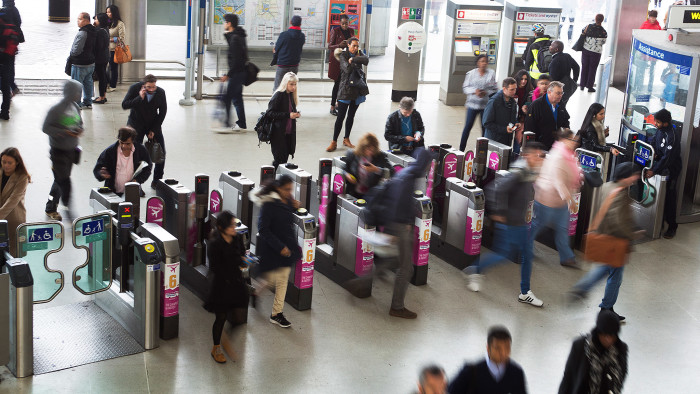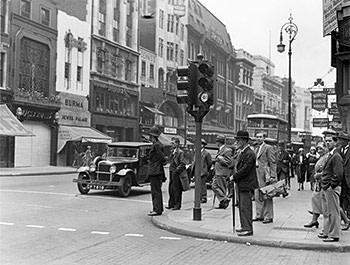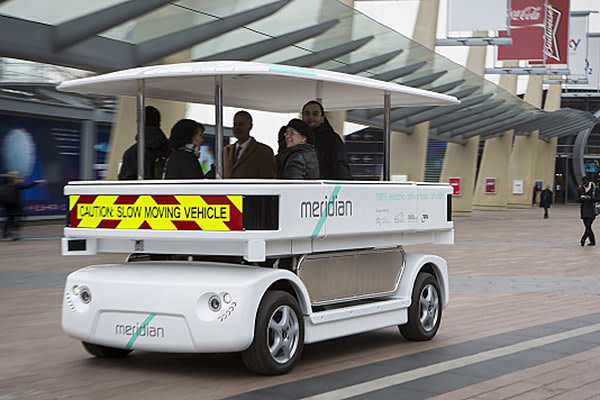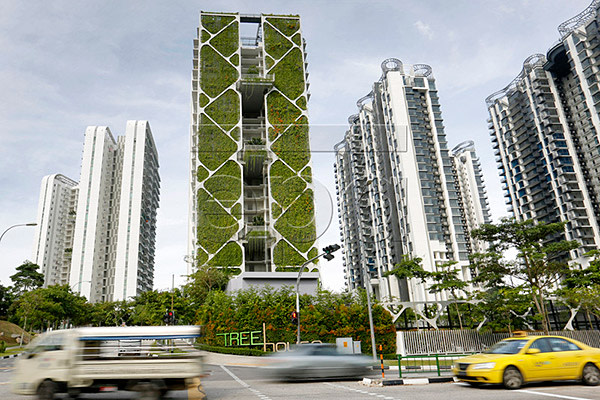Mixed signals on London’s drive for smart city technology

Roula Khalaf, Editor of the FT, selects her favourite stories in this weekly newsletter.
A rush-hour journey on the London Underground gives a glimpse into how technology can ease the way on the city’s overcrowded transport system — and of the wider challenges to come.
Millions of Londoners use Oyster cards, which they tap on a reader to go through an entry or exit barrier. This shaves seconds off the time it takes to get through a station — but those seconds add up: passengers make a collective 4m trips a day, and the accumulated savings result in fewer queues and less frustration.
Yet rush hours are busier than ever. The cause is London’s population boom. The Greater London Authority announced in February that the city’s population was at least 8.6m. The mayor’s office says the capital is on track to reach 9m before New York City and will approach 10m in the next 15 years. The GLA estimates this will bring another 641,000 jobs, 800,000 more homes and 600,000 more passengers travelling at peak times by 2031. Oyster card technology is a nod to how the city can accommodate this influx.
Before the advent of Oyster, the cost of producing tickets accounted for nearly 15 per cent of the running costs of the Tube. Today, it is below 10 per cent. These savings mean more money for train services and refurbishments, which should mean more frequent trains to carry more passengers. Now that the Underground accepts contactless debit and credit cards, as well as Apple Pay through compatible iPhones and Apple Watches, it hopes to reduce ticket production costs to closer to 7.5 per cent.
Oyster’s success is a prime example of a “smart city” policy — a buzzword concept adopted by policymakers and politicians around the world who hope digital technologies can be deployed to make cities more efficient and liveable. By 2013, that buzzword had reached the office of Boris Johnson, the mayor of London. He initiated the “Smart London Plan”, whose objectives range from encouraging the emergence of digital start-ups to using technology to reduce the number of traffic collisions.
“The plan doesn’t talk too much about technology, but it talks about outcomes,” says David Gann, vice-president of development and innovation at Imperial College London and chairman of the Smart London Board, a group of advisers on how the city can best use technology and data. “It’s about how you make London a better place to work, rest and play.”

The results from the initiative have been mixed. One obvious failing is the slow spread — or lack — of superfast broadband in the city; the plan sets a goal of having one of the fastest wireless networks globally by 2016. A visit to modern Asian cities shows how far behind London is on broadband speeds compared with some places in the world. In Seoul, it is common to see commuters passing the time on subway journeys watching high definition video on their phones, streamed over mobile networks and public WiFi.
“Universally, it’s a frustration and it’s a work in progress,” says Gann of the capital’s “patchy” broadband capacity. “It can drag us back if we’re not careful.”
Yet in many other ways, London is ahead of the global curve. City Hall’s plan had aimed for the creation of 200,000 technology jobs in the city by 2020. According to a report by Tech City, a government-sponsored body that provides support for digital businesses, London’s technology companies already employ more than 250,000 people.
A bright idea

Gracechurch Street in the financial district was the site of one of London’s first pieces of smart city infrastructure — albeit before such a concept existed, writes Feargus O’Sullivan. In 1932, Britain’s first vehicle-activated traffic light was installed here. For the first time, intervals between light changes could be altered without human intervention according to the number of vehicles on the road. This hyper-modern technology could not, however, prevent it from meeting the same fate as London’s first (manually operated) traffic light, installed on Whitehall in 1868. Like their cruder Victorian predecessors, the Gracechurch Street lights were destroyed in a gas explosion. (Pictured above are 1930s traffic lights on the Oxford Street shopping thoroughfare.)
The credit must go to the city’s enduring sense of entrepreneurialism. Where once investment banking or management consultancy were seen as the glamorous career choices, many of today’s brightest young Londoners want to be start-up founders — and many find backers in the capital. Figures from London & Partners, the mayor’s promotional body, suggest the capital’s digital groups received $682m in venture capital funding in the first three months of 2015, up 66 per cent compared with the same period last year. Though this pales in comparison with the sums raised in Silicon Valley, it has helped London become one of Europe’s technology hubs, competing with the likes of Berlin and Stockholm to attract the world’s best tech developers and business people.
There are some things that public bodies can take more credit for, however. Matthew Pencharz, deputy mayor for environment and energy, hails the London Datastore as a great success. This website provides access to about 850 databases of detailed information on everything from employment to crime and health, into which developers are tapping to build apps to help solve urban problems.
Data gathered by city authorities have a value that is wasted if it is not utilised, says Pencharz. “There are all sorts of companies using data and finding that lost value,” he adds. Perhaps the best-known example is Citymapper, an app that takes publicly available transport information published by operators to provide real-time travel directions.
Many of the truly radical plans, inevitably, come in transport. Government-backed trials of driverless cars have begun in Greenwich, south-east London, and other British cities, although the small autonomous shuttles being tested seem underpowered compared with those from Google, whose driverless cars have so far covered millions of miles on Californian roads without crashing.

The £16bn Crossrail project, a 100km east-west rail link, may provide a better example of world-beating technology to move people round. David Gann of Imperial College suggests Crossrail will eventually provide the “smartest rail infrastructure in the world”.
“London is wonderfully ad hoc and chaotic,” he says. “But that can deliver great things.”
Environmental visionaries
In June, Nesta, the innovation charity, released new research that ranked the world’s cities according to performance of initiatives to promote technology, innovation and entrepreneurship. The winner, just ahead of London, was New York, which was deemed the world’s smartest city for various public initiatives, from supporting a thriving tech start-up sector to sponsoring technology apprenticeships for young people.
But all of these sound quite small-bore compared with the sorts of advances technology can bring. What about more futuristic visions of a smart city?

Some of these spring from the more difficult problems that have emerged as a result of urbanisation. One issue bothering many city planners worldwide is how to tackle pollution. Some are introducing “vertical green architecture”, placing greenery across a building’s façade as a space-saving solution to tackle carbon emissions. Singapore, Bangkok and Paris all have plans for such buildings to help support ambitious pledges to tackle climate change.
Others have smart ways of disposing of rubbish. In South Korea, Songdo is a new city built on reclaimed land between Seoul and its out-of-town airport. All the city’s household waste is sucked into a network of tunnels and delivered to waste treatment centres for sorting and disposal. In Lusail City in Qatar, plans are afoot for a similar system that would use pneumatic tubes to transport rubbish to a processing centre. These are modern cities without dustbins or rubbish trucks — or the mess and smell associated with them.
Comments